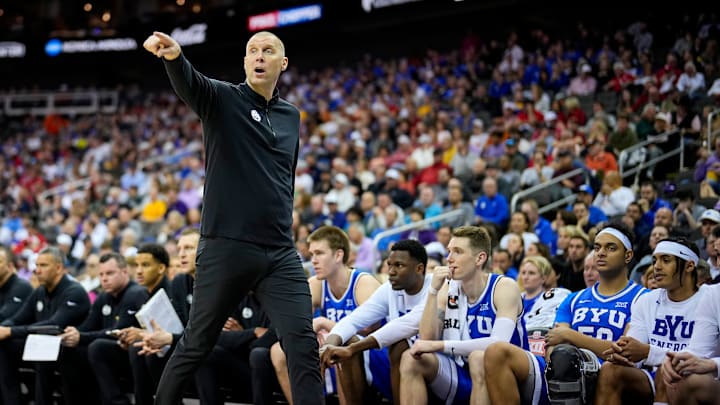BYU basketball has a problem, and in their loss to Texas Tech it was more apparent than ever. The Cougars’ dependency on 3-point shooting has been their biggest strength, as well as their greatest weakness this season. When they’re hitting shots, they seem capable of beating anyone in the nation. Conversely, when they go cold from deep they dig their own grave with each missed attempt being another scoop full of dirt for their final resting place. Here lies BYU’s hopes and dreams. Rest in Peace.
Against Texas Tech, BYU’s shooting woes decided the game within the first 10 minutes as they fell behind by 20 points in the first half. Granted, the Red Raiders couldn’t miss during this stretch, which paired with BYU's ice-cold numbers for the perfect storm for a BYU loss.
The Cougars have hung their hats on their volume shooting from long-range. BYU rarely has athletes to match up with other power conference foes, so getting creative and doing things differently is key to winning games in a league as competitive as the Big 12. BYU makes a lot of 3s--they make their name on their long-ranged attacks--and when they are hitting from downtown, they're nearly unstoppable. Unfortunately, we've seen the adverse effects of what happens when the shots just aren't falling.
BYU's inconsistency between games has been well-documented, and their two games in the Big 12 Tournament were the perfect examples of how BYU can look like world-beaters one night, and then look like someone unplugged the brave little toaster the next as they clobbered UCF in their first game and turned around to find themselves the victims of an unstoppable storm courtesy of Texas Tech.

Many theories have arisen about where BYU can look to find replicable success. Perhaps their success is dependent on Dallin Hall finding a rhythm. They might have the greatest secret weapon in the nation in Aly Khalifa. Maybe their secret recipe is the way that they pass the ball to create open shots. These could all be true, or maybe none of them are true, but after watching BYU play this season, one thing is clear: BYU's success may be a mystery, but their failures aren't difficult to decipher.
BYU's winning formula is reliant on hitting 3-pointers, so when their 3-point specialists aren't scoring from deep, they shouldn't be on the floor in place of BYU's more reliable sources of offensive production. Basketball is a tricky thing; even the best players in the world have poor performances on occasion for no clear reason. For BYU, a cold-shooting night is bound to happen. But if the Cougars want to make a run in March Madness, they'll need to find reliable scoring options to lean on when the 3-ball just isn't falling.
Against Texas Tech, everyone was struggling to hit shots, and some games aren't meant to be won. Having players like Trevin Knell and Spencer Johnson on the floor when they can't hit shots is a perplexing decision, and I squirm thinking about what players like Saunders and Robinson could provide in the way of offensive variety if they were allowed more minutes in these games.
I don't want this post to sound anti-Knell or Johnson. Despite the negative things that I may moan about while watching their team lose, I do think they are valuable contributors to the team. Heck, Johnson is BYU's leading rebounder! What I'm suggesting is that bad games inevitably happen to good players, and that when that happens, benching that player in favor of someone else who may offer a new option on offense is not an indictment on their character or ability. I just want to see this team perform to the best of their ability, and it's difficult to watch this team lose big when I know they could do better.
Of course, I'm not with the team, so what do I know? Sometimes players start slow and pick things up. If Knell were to start hitting shots in the second half against Tech, as he did in BYU's comeback win over TCU, I wouldn't be here whining about his minutes. Basketball is mysterious and unpredictable, but that's what makes it so fun. This is March, after all.
